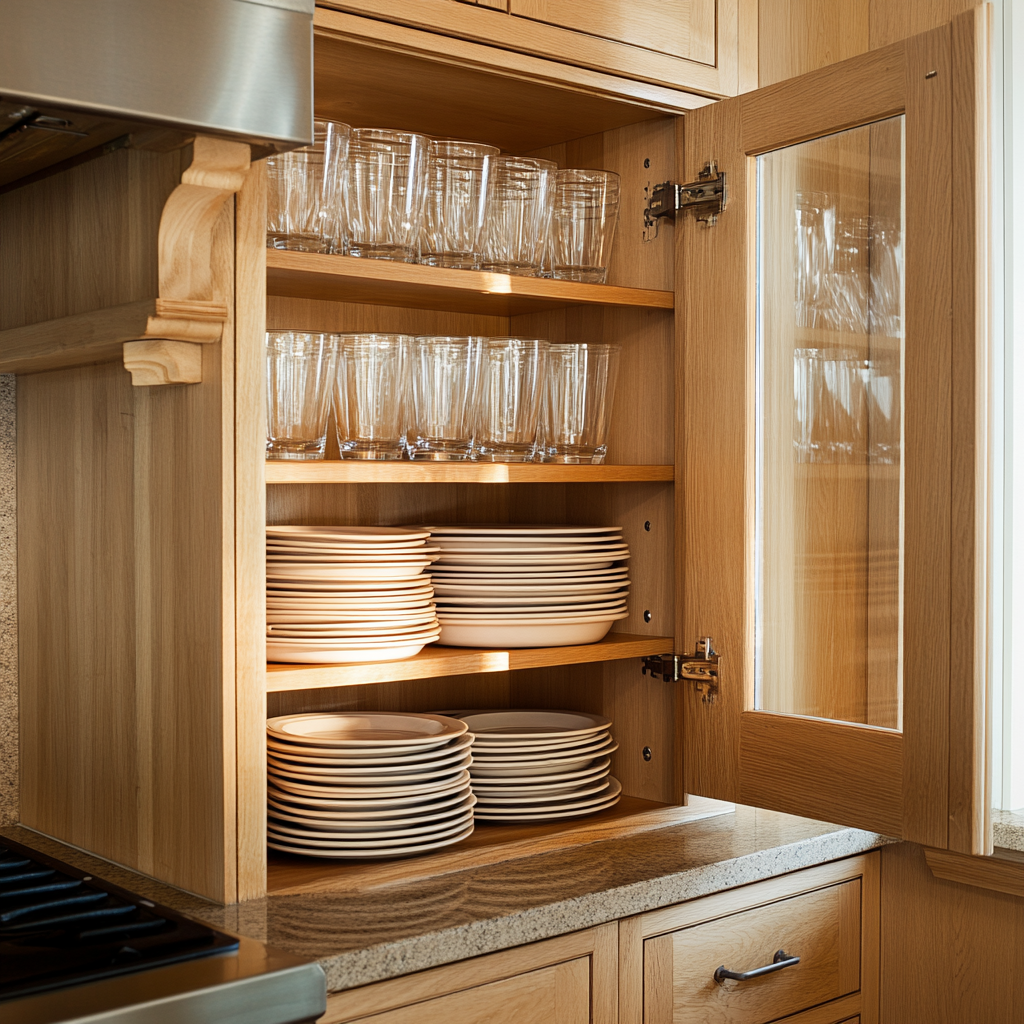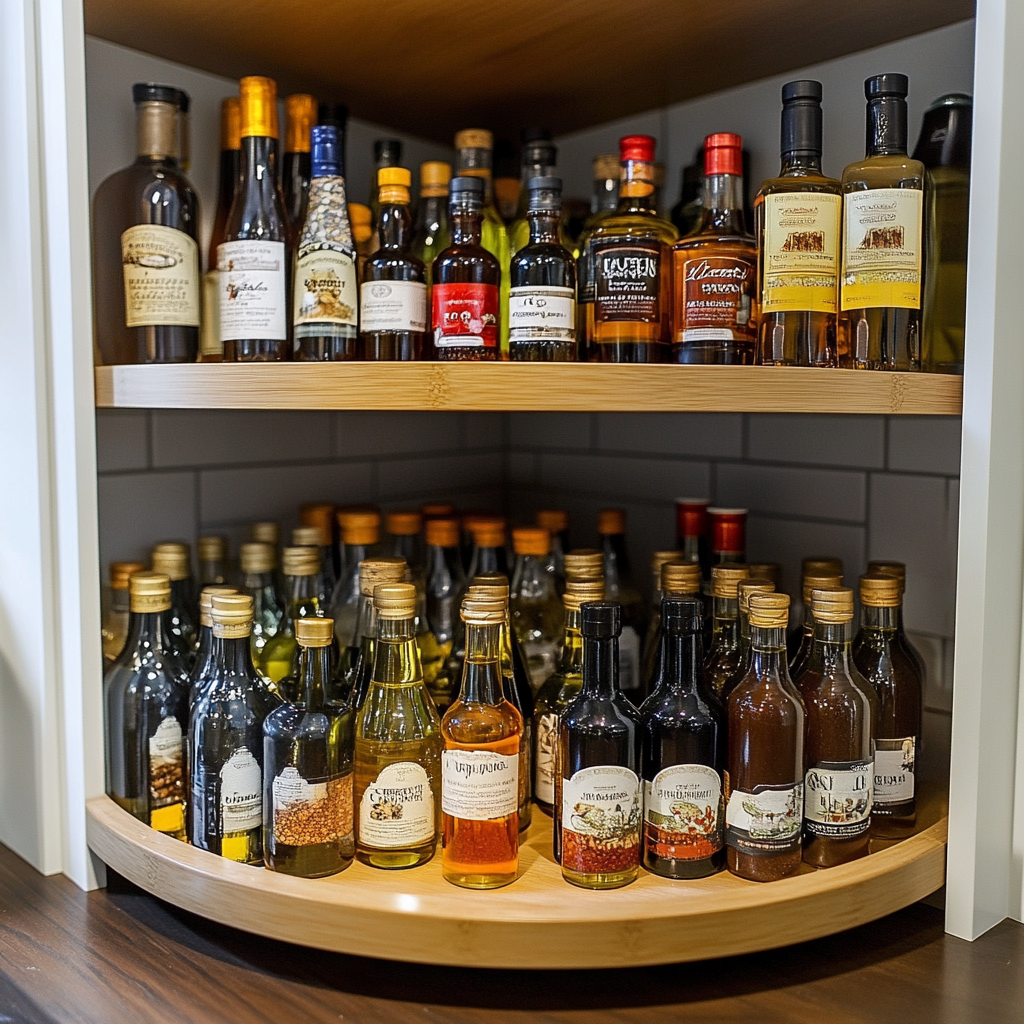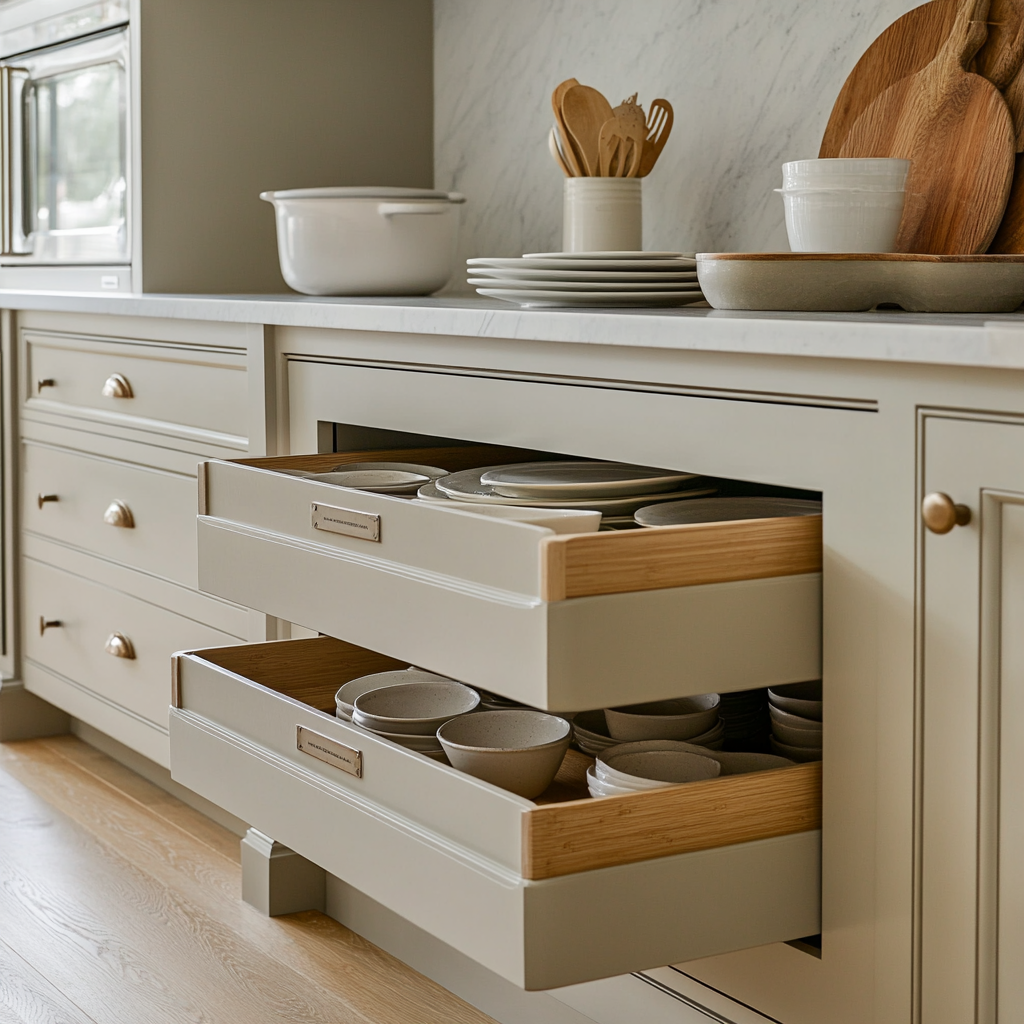Kitchen cupboards are the unsung heroes of a functional home. When organized thoughtfully, they streamline meal prep, reduce stress, and even make cooking enjoyable. Yet, for many, these spaces become black holes for mismatched lids, expired spices, and rarely used gadgets. If you’re tired of digging through cluttered shelves, this guide reveals the best way to organize kitchen cupboards—using pro strategies, smart tools, and design principles that work for any kitchen size or style. Let’s turn your cabinets into models of efficiency.

Step 1: Declutter Ruthlessly
Before buying bins or rearranging shelves, purge what you don’t need. Clutter is the enemy of organization.
The 4-Box Method:
- Keep: Daily-use items (e.g., plates, favorite mugs, essential tools).
- Donate/Sell: Duplicates, unused appliances, or dishes in good condition.
- Trash: Expired foods, chipped containers, broken tools.
- Relocate: Items that belong elsewhere (e.g., holiday platters to basement storage).
Pro Tip: If you have custom kitchen cabinets, decluttering first helps you maximize their tailored storage potential.
Step 2: Group Items by Zones
Organize cupboards based on how you cook. Group items into zones for efficiency:
- Prep Zone (near cutting boards and knives):
- Store mixing bowls, measuring cups, and spices.
- Cooking Zone (by the stove):
- Pots, pans, cooking oils, and utensils.
- Serving Zone (close to the dining area):
- Plates, bowls, glasses, and serving dishes.
- Baking Zone (if applicable):
- Baking sheets, rolling pins, and cookie cutters.
Step 3: Optimize and Organize Kitchen Cupboard Shelf Layouts
Upper Cabinets
- Daily Dishes: Place plates, bowls, and glasses at eye level.
- Lightweight Items: Reserve higher shelves for infrequently used items (e.g., holiday serveware).
- Stack Smart: Use non-slip shelf liners to prevent sliding.
Lower Cabinets
- Heavy Cookware: Store pots, pans, and small appliances (like blenders) here.
- Pull-Out Shelves: Ideal for deep cabinets—no more crawling to reach the back.
Corner Cabinets
- Lazy Susans: Rotate to access spices, oils, or snacks effortlessly.
- Diagonal Pull-Outs: Maximize dead space with custom cupboard cupboard organization solutions.

Step 4: Invest in the Right Organizers
- Tiered Shelves: Double vertical space for canned goods or spices.
- Drawer Dividers: Keep utensils, lids, or wraps neatly separated.
- Door-Mounted Racks: Attach to cupboard doors for foil, lids, or cleaning supplies.
- Clear Bins: Label bulk items (pasta, snacks) for visibility.
Pro Tip: For different types of cabinets with awkward dimensions (e.g., tall or shallow), measure before buying organizers.
Step 5: Use Vertical Space
- Under-Shelf Baskets: Hang from existing shelves to store tea bags or spice packets.
- Hooks or Pegboards: Mount inside cupboard doors for mugs or measuring spoons.
- Tension Rods: Create dividers for baking sheets or cutting boards.
Step 6: Maintain the System
- Daily Reset: Spend 2–3 minutes returning items to their zones after use.
- Monthly Check-Ins: Toss expired foods, wipe spills, and adjust layouts as needed.
- Seasonal Edits: Rotate holiday items or summer grilling tools in and out.
Solutions for Common Cupboard Organization Challenges
Problem: Deep, Hard-to-Reach Cabinets
- Fix: Install pull-out trays or sliding baskets (e.g., Rev-A-Shelf).
Problem: Too Many Small Appliances
- Fix: Dedicate one lower cabinet to appliances; use a power strip for easy access.
Problem: Overflowing Food Containers
- Fix: Nest lids vertically in a magazine holder and stack containers by size.

FAQs: Your Cupboard Organization Questions Answered
Q: How do you decide where to put things in kitchen cabinets?
A: Follow the “work triangle” rule. Keep items near where they’re used: pots by the stove, glasses by the fridge, and cleaning supplies under the sink.
Q: How should kitchen cupboards be arranged?
A: Heavy items (pots, appliances) go in lower cabinets; daily dishes at eye level. Group similar items (baking tools, spices) together.
Q: Should food go in upper or lower cabinets?
A: Dry goods (pasta, cereal) can go in upper cabinets. Reserve lower cabinets for heavier items or appliances.
Q: Where to put dishes and glasses in kitchen cabinets?
A: Store them near the dishwasher or sink for easy unloading. Use upper shelves for daily-use dishes and lower shelves for specialty serveware.
The best way to organize kitchen cupboards isn’t about perfection—it’s about creating a system that works for you. Whether you’re retrofitting stock cabinets or optimizing custom kitchen cabinets, the key is to prioritize accessibility and simplicity. Remember: A well-organized kitchen saves time, reduces stress, and even inspires culinary creativity.
For more ideas, learn how to arrange kitchen cupboards with guides from The Home Edit.